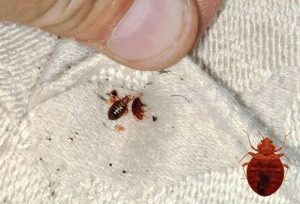When you were a child, you may have been told to ‘not let the bedbugs bite,’ and perhaps, you still keep hearing the same phrase until now. For years, bed bugs have caused many sleepless nights for millions of people. There are, however, many misconceptions about bedbugs – what do bedbugs look like? How do you get rid of them?
Pesticides used to eradicate bedbugs in the 1940s have been banned in the 1970s, and this caused the pesticides to return to homes and other establishments. In the last few decades, bed bugs have increased in number and have been causing sleepless nights.
What do bedbugs look like
 Bed bugs are often confused with other small brown insects. Entomologist Richard Pollack, Ph.D., however, said that of the bed bugs people reported, only 10% of them are bedbugs. Bed bugs are reddish-brown with a long, oval-shaped body. It’s about the same size and shape as that of an apple seed. These bedbugs thrive on animal blood or human blood, and while they don’t fly, they can move quickly on floors, ceilings, and walls.
Bed bugs are often confused with other small brown insects. Entomologist Richard Pollack, Ph.D., however, said that of the bed bugs people reported, only 10% of them are bedbugs. Bed bugs are reddish-brown with a long, oval-shaped body. It’s about the same size and shape as that of an apple seed. These bedbugs thrive on animal blood or human blood, and while they don’t fly, they can move quickly on floors, ceilings, and walls.
Bedbug bites are difficult to distinguish from other insect bites. People also have different reactions to bedbug bites. Some would have rashes and itching, while some would experience similar skin conditions, including hives and fungal infections.
Look for signs of bedbugs
Don’t expect to see the bedbugs. Instead, focus on their marks. The first and most common sign of bedbugs is their bite marks on your body and some small spots of blood on your sheets. The bloodstains are from the bites and the insect’s excrement. You can also check your mattress and look for black and yellow specks. These posts are bedbugs’ excrement, shed skins, and eggshells.
Hiding places of bedbugs
Bedbugs like to hide, and they enter homes undetected. They come in and lounge in luggage, beds, couches, and other items. They can flatten themselves to fit in tiny spaces. They are also usually found in box springs, bed frames, and headboards—any place where they can easily bite people and feed at night.
Bedbugs don’t mean dirty homes. These insects don’t care about a messy or clean house. They only care about their food source, which is people and animals. There are no studies that show any disease transmission when the bedbugs bite. However, their marks and bites are a cause of concern, especially for people with sensitive skin.
Get Rid of Bedbugs
Some homeowners resort to do-it-yourself solutions in removing bedbugs in their homes. While it can be effective, most times, it makes matters worse. Bedbugs reproduce and feed regularly. Their number could grow overnight. Professionals are better equipped to get rid of bedbugs.
There are some ways you can speed up the removal process
Clean the cutter
Get rid of old newspapers and magazines. Take out some house items that you don’t need, as these may serve as breeding grounds for bedbugs. Bedbugs hide in cardboards, so use plastic bins for your storage needs instead.
Keep the infested items in plastic bags and separate them from other objects in the room. Wash and dry the items at the hottest temperature that your machine is capable of. The New York State of Integrated Pest Management suggests that 60 minutes on high heat setting can kill the bedbugs.
Inspect your furnishings
Check your mattresses and headboards for bedbugs. These insects also stay in furniture, in wall cracks, and beds. According to the Environmental Protection Agency (EPA), the bedbug population decreases with a thorough vacuuming. So, vacuum your rugs, carpets, furniture, beds, and all the cracks and crevices in your home. Dismantle your bed frames as well to expose their hiding spots. It’s easier to disinfect and clean these areas to prevent the bedbugs from coming again.
Don’t make the mistake of calling bed bug professional too late. If you suspect bedbugs in your home, it’s best to call on the experts to check the problem’s severity. Licensed exterminators can give you the details of the course of action they’ll take to eradicate bedbugs in your home. They have all the equipment to address the problem adequately. It takes more than just over-the-counter spray to make sure that your home is free from bedbugs.
